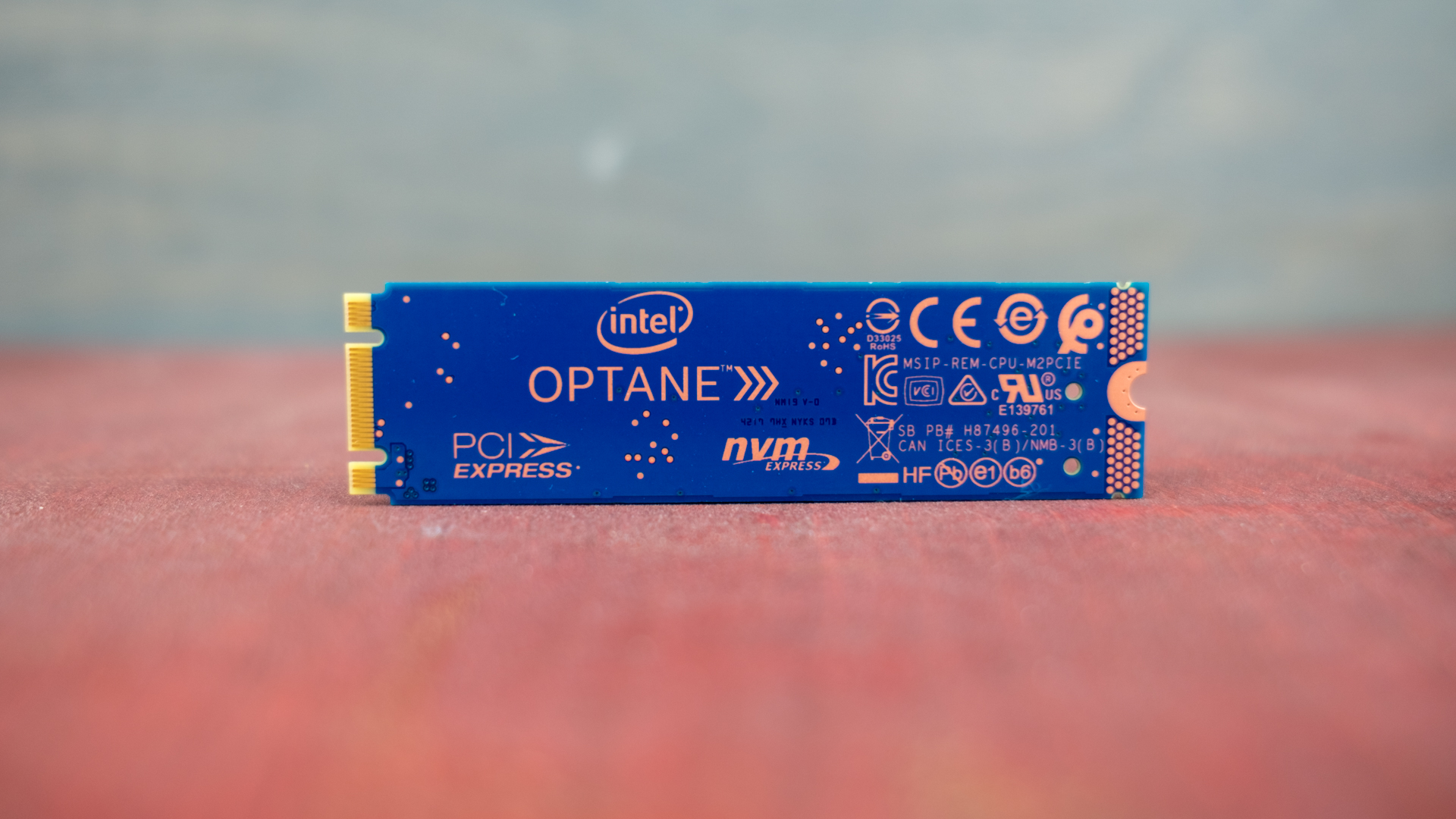TechRadar Verdict
The Intel Optane SSD 800P could have been a tour de force with its promising 3D XPoint technology, but it’s ultimately hamstrung by tiny capacities and a hampered interface.
Pros
- +
Makes Optane SSDs a little cheaper
- +
365 TBW endurance
Cons
- -
PCIe 3.0 x 2 interface limits performance
- -
Tiny storage capacities only
- -
Pricier than most M.2 NVMe drives
Why you can trust TechRadar
Intel unleashed unbelievably fast Optane 900P SSDs earlier this year but, to our chagrin, they’re not exactly affordable at $369 (£329, AU$559) for the smallest, 280GB drive. Not to mention 900P drives don’t come in the easy-to-install and ubiquitous M.2 form factor – instead, they’ve only been available as a beefy PCIe card or U.2 drive.
So, enter the Intel Optane SSD 800P drives. These drives pack the same 3D XPoint technology that makes the 900P series so blazing fast into a far smaller package. Plus, these gum stick-sized SSDs start at a more affordable price, albeit with much, much smaller capacities, with 58GB running for $129 (about £90, AU$165) and $199 (about £140, AU$255) for 118GB.
While these drives should be just as fast as the company’s flagship enterprise drives, poor decisions to limit its maximum bandwidth, capacity and performance – no to mention a still high asking price – make them hard recommend for anyone.
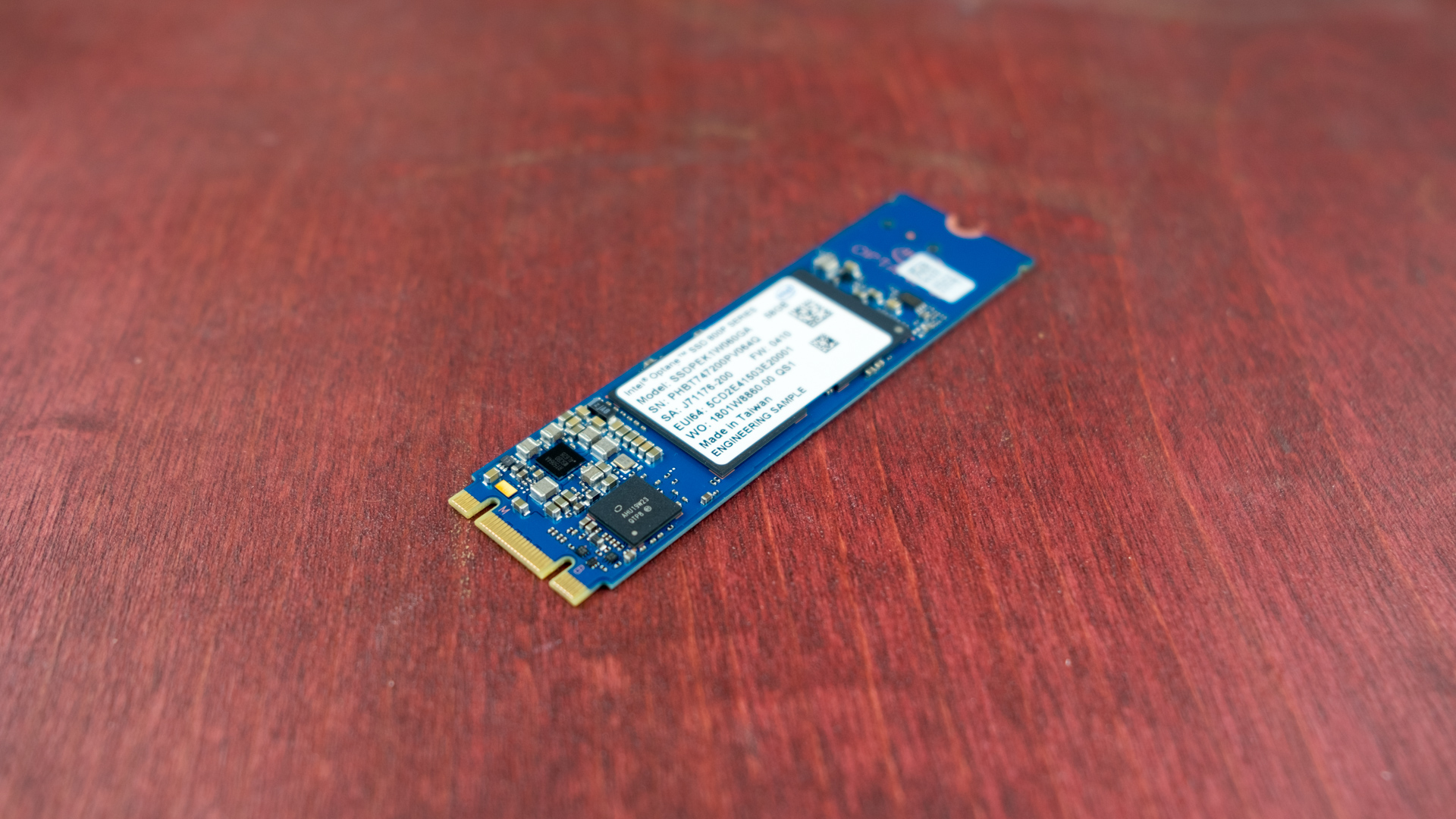
Features
Whereas the Intel Optane SSD 900P was introduced as a high-end storage solution, the Intel Optane SSD 800P was announced as mainstream storage for use as a primary – or operating system boot – drive.
However, we find it tough see ourselves using a 58GB SSD as our main drive. Even if we were to RAID two 118GB drives together for a total of 236GB, it seems puny compared to the other 256GB SSDs we could pick up for half the price and far less complexity.
The Intel Optane SSD 800P’s headline feature should be 3D XPoint, which is designed to deliver 1,000 times the performance, 1,000 times the speed, and 10 times the capacity of traditional NAND.
Unfortunately, the tiny capacities in which you can buy an Optane SSD 800P don’t really support Intel’s claims. Speed-wise, these drives are also limited by a PCIe 3.0 x 2 interface that can only achieve up to 1,450MB/s and 640MB/s sequential read and write speeds, respectively.
That’s half as slow as the speeds we see from other mainstream NVMe drives, such as the Samsung 960 Evo or Intel’s own 760p Series SSD.
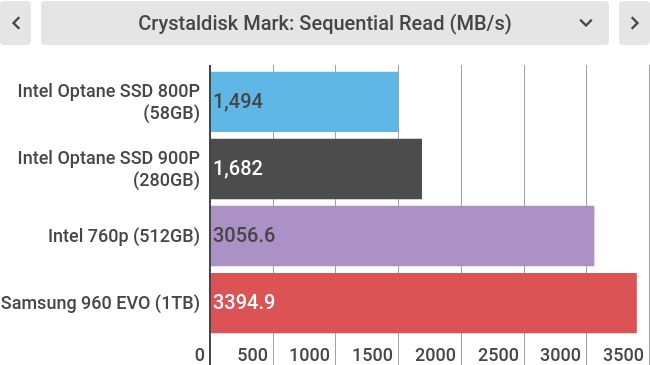
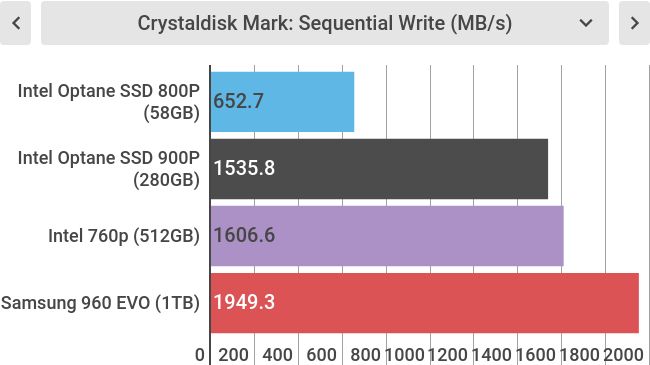
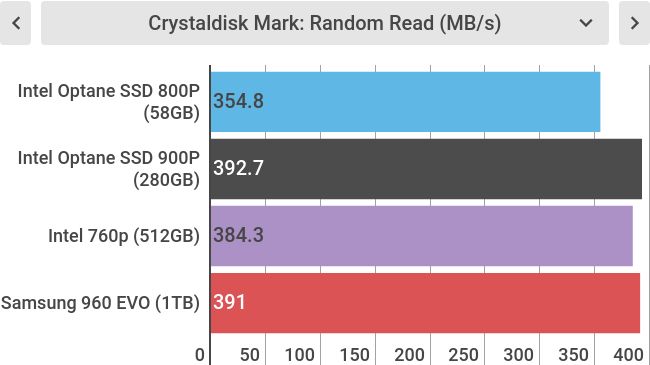
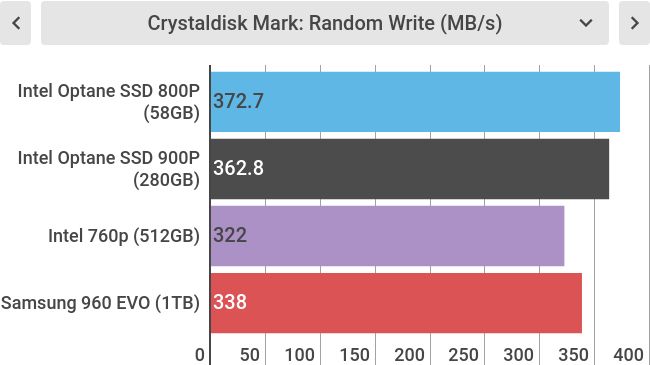
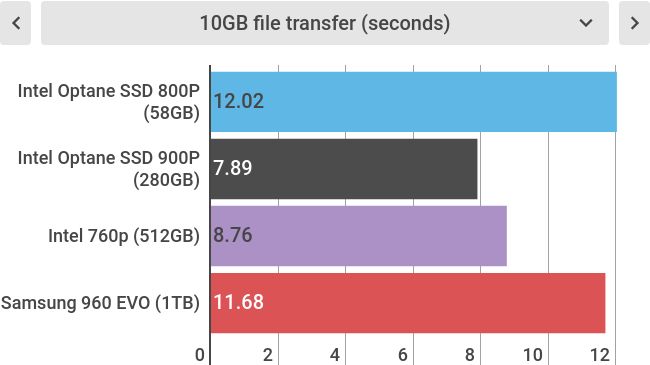
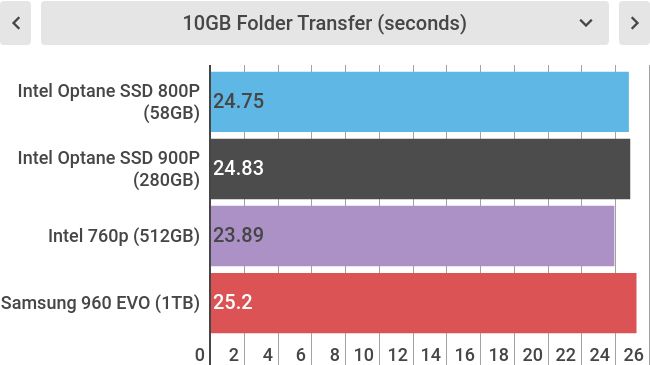
Performance
In our standard battery of storage benchmarks, the Optane SSD 800P falters behind many other drives. Unsurprisingly, the drive’s sequential read and write speeds are half of other drives utilizing PCIe 3.0 x 4 interface. This leaves us to conclude there’s an intrinsic connection between the halved performance and using only half as many PCIe lanes.
Surprisingly, the Intel Optane SSD 800P achieves some of the best random write speeds we’ve seen, though, once again random read performance leaves us wanting.
Intel claims that its newest mainstream drive is most effective at operating with low queue depth. (If you’ve never heard of the phrase before, queue depth refers to the number of read or write operations a volume of storage can handle at the same time.)
However, our simple file transfer tests show that this really isn’t the case. The Intel Optane SSD 800P takes almost the longest to complete a 10GB file transfer compared against Intel Optane SSD 900P, Intel 760p and Samsung 960 Evo. It fares better when moving a 10GB folder, but you’re still looking at paying much more for this drive that doesn’t perform significantly better.
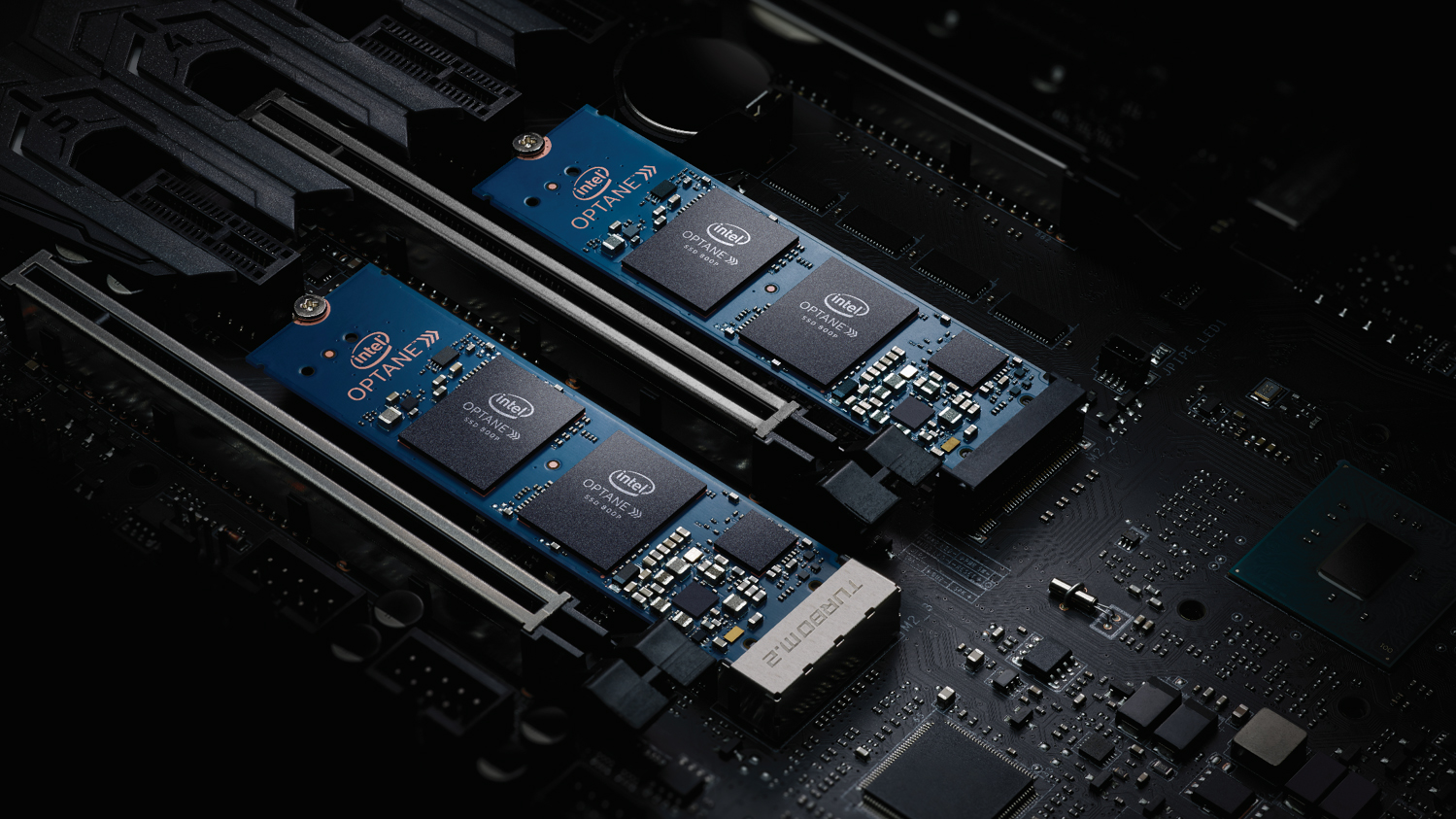
Final verdict
In the end, we’re at a loss as to who the Intel Optane SSD 800P would be ideal for. To even get a decent amount of storage, you would have to buy two 118GB drives for $199 (about £140, AU$255) each – then go through the trouble of arranging them into a RAID.
Meanwhile, most ‘mainstream’ users would get more storage, a cheaper price and better performance by going with a 256GB Intel 760p Series SSD for $109 (£113, AU$169) or 250GB Samsung 960 Evo for $119 (£129, AU$189).
With competition so fierce in the M.2 NVMe world of SSDs, there’s no truly compelling reason to consider the Intel Optane SSD 800P for your PC.
Kevin Lee was a former computing reporter at TechRadar. Kevin is now the SEO Updates Editor at IGN based in New York. He handles all of the best of tech buying guides while also dipping his hand in the entertainment and games evergreen content. Kevin has over eight years of experience in the tech and games publications with previous bylines at Polygon, PC World, and more. Outside of work, Kevin is major movie buff of cult and bad films. He also regularly plays flight & space sim and racing games. IRL he's a fan of archery, axe throwing, and board games.
